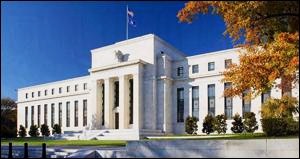By Pam Martens: January 5, 2015
Jeffrey Gundlach, the bond guru who co-founded DoubleLine Capital in 2009 and was prescient on Treasury yields plunging in 2014, has been making some bold predictions for rates in 2015.
On December 9 of last year, Gundlach told Reuters’ Jennifer Ablan that the yield on the benchmark 10-year U.S. Treasury note could fall to 1 percent this year. Gundlach is quoted as follows in the article: “I still believe that there is a danger of repeat of a Treasury meltup that 2014 did end up bringing, particularly into the crescendo of October 15. If something can’t go up, it has to go down. Yields can’t seem to go up. They might go down. And if they go down any amount again, if the 10-year goes below 2 percent, even below 2.20 percent, that’s the line in the sand I am talking about.”
As of this morning, the 2.20 yield has been decisively breached. The 10-year Treasury is trading at a yield of 2.09 percent.
A month before the Reuters interview, Gundlach was opining to Forbes’ Matt Schifrin on why the Fed wants to raise interest rates and the impact that will have on the U.S. dollar. On the Fed’s motivation, Gundlach said: “They don’t really need the rates to be higher, but they seem to want to reload the gun so they aren’t stuck at zero without any tools.” Here at Wall Street On Parade, we were thinking along the same lines back on October 14.
As for the dollar, Gundlach told Schifrin that if the Fed tightens in 2015, the dollar will strengthen further, causing commodity prices to also fall: “[we will] import deflation and you will see an episode of deflationary scare,” Gundlach said.
Why does a rising U.S. dollar worsen the outlook on deflation inside the United States? Consumers in this country buy imported goods with their dollars. The imports are priced in currencies which are declining in value to the dollar, lowering the cost of what consumers pay for the imports. For example, the Euro traded as low as $1.1864 this morning, its weakest trading level to the dollar since March 2006.
Gundlach is also apparently looking at some of the same charts we’re perusing with consternation here at Wall Street On Parade. This past weekend, Barron’s Jonathan Laing published an interview with Gundlach which contained this nugget: “Look, commodity prices have fallen back to their lows of 2009, which of course was at the height of the financial crisis. Something is obviously very wrong these days in the global economy.”
The Fed’s persistent chatter about raising its Fed Funds rate in 2015, despite mushrooming global signs of a faltering global economy and deflationary headwinds blowing through much of Europe, has been the wind beneath the wings of the rising U.S. dollar. That has likewise contributed to the 10-year U.S. Treasury delivering a higher yield than its sovereign counterparts. Ten-year note yields or comparable maturities in Germany, Italy, Austria, Belgium, Finland, France and Ireland set all-time record lows in December. The U.S. 10-year Treasury is still trading 71 basis points above its all-time low yield of 1.38 percent, set in July 2012.
The Fed’s credibility on its intention to hike rates this year is being strained further by the action on the 30-year U.S. Treasury bond. This morning, its yield has dropped to 2.66 percent, its lowest yield since September of 2012. If the U.S. economy was actually picking up enough steam to warrant a Fed rate hike, the long-term outlook on inflation as reflected in a 30-year instrument would not be declining so dramatically.
Another problem for Fed credibility on the need to hike rates is the flattening of the yield curve – something that typically happens prior to an outright inverted yield curve, when short rates on Treasuries outpace long rates in anticipation of a recession. This morning, the yield on the two-year note versus the 30-year bond stood at just 197 basis points, the lowest spread since early 2009 – at the height of the financial crisis.


